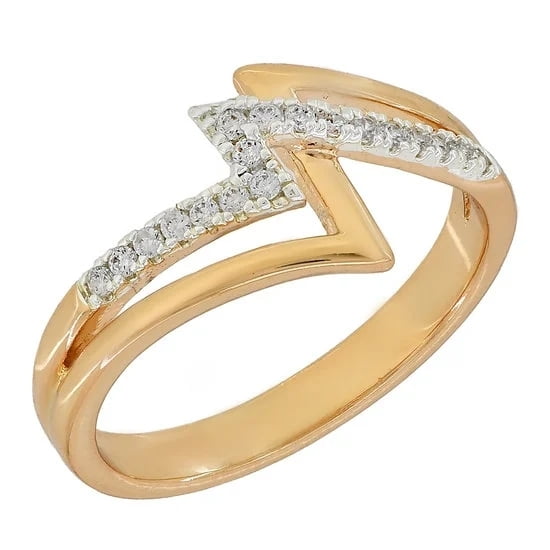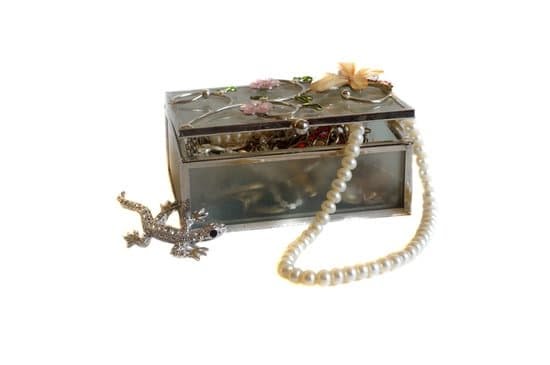Diamond jewelry is a timeless and cherished possession that often holds sentimental value. However, over time, even the most stunning diamond pieces can become dull and lackluster due to everyday wear and exposure to oils, dirt, and dust. That’s why knowing how to clean diamond jewelry is essential in maintaining its brilliance and sparkle. One effective method for restoring the beauty of your precious gems is by using ammonia as a cleaning agent.
Cleaning diamond jewelry regularly not only enhances its appearance but also helps to preserve its value. Oils from our skin, lotions, perfumes, and everyday grime can build up on the surface of diamonds, causing them to lose their luster. By removing these impurities, you can bring back the dazzling shine that initially captivated you.
Ammonia is known for its effectiveness in cleaning diamond jewelry. It has powerful properties that can dissolve dirt and grime without causing damage to the diamonds or their settings. When used correctly in combination with water, ammonia creates an efficient cleaning solution that easily cuts through residue and restores the brilliance of your precious gemstones. In this article, we will guide you through the process of using ammonia to clean your diamond jewelry effectively.
The Benefits of Using Ammonia for Cleaning Diamond Jewelry
Ammonia is a widely used and effective cleaning agent for diamond jewelry. The benefits of using ammonia for cleaning diamond jewelry are numerous and can contribute to maintaining the brilliance and sparkle of your precious pieces.
One of the main advantages of using ammonia is its ability to cut through dirt, grime, and oils that can build up on diamond jewelry over time. This is especially important for items worn frequently, such as engagement rings or everyday earrings. The ammonia solution can penetrate deep into the crevices of the piece, removing any trapped debris and restoring its natural shine.
In addition, ammonia is safe to use on diamonds because it does not have any harmful chemical properties that could damage or corrode the stone. Unlike some commercial cleaners that contain harsh chemicals, ammonia provides a gentle yet thorough clean for your diamond jewelry. It effectively removes dirt without causing any harm to the stone itself.
Another benefit of using ammonia for cleaning diamond jewelry is its cost-effectiveness. Ammonia is an affordable cleaning agent that can be easily found at most grocery stores or hardware stores. This makes it a budget-friendly option for those who want to keep their diamond jewelry looking its best without breaking the bank.
Overall, utilizing ammonia as a cleaning agent for your diamond jewelry can offer significant benefits. Its ability to remove dirt and grime, its safety in preserving the integrity of the stone, and its affordability make it an excellent choice for maintaining the beauty and brilliance of your precious pieces.
Preparing Your Cleaning Solution
To effectively clean diamond jewelry with ammonia, it is important to properly prepare the cleaning solution by mixing ammonia with water. This section will provide you with easy-to-follow steps on how to create the perfect cleaning solution for your precious gems.
Gathering the necessary supplies: Ammonia, water, soft brush, and a container
Before starting the mixing process, gather all the necessary supplies. You will need a small container that is big enough to hold your diamond jewelry and allow for complete submersion. Make sure to choose a container that is safe to use with ammonia.
In addition to the container, you will need ammonia and water. It is important to use regular household ammonia, which can be found at most grocery or hardware stores. Avoid using any scented or colored ammonia products as they may contain additives that can potentially harm your jewelry.
Lastly, have a soft brush ready for gentle scrubbing and a soft cloth for drying and polishing the jewelry after cleaning.
Create the cleaning solution: Proper ratios of ammonia and water
Once you have gathered all the supplies, it’s time to mix the cleaning solution. The proper ratio of ammonia to water is essential for effective yet safe cleaning. To create the solution, follow these steps:
- Fill your container halfway with lukewarm water.
- Add just a few drops of regular household ammonia into the water.
- Gently stir or swirl the mixture using a spoon or another non-abrasive tool.
- Ensure that the solution is well-mixed before proceeding to soak your diamond jewelry.
Remember, more is not better when it comes to using ammonia. Using too much can cause damage or discoloration to your jewelry. Stick to a small amount of ammonia in relation to the volume of water used.
Now that your cleaning solution is ready, we can move on to soaking your diamond jewelry for thorough cleaning in the next section.
Step-by-Step Guide
Gathering the necessary supplies
Before you begin cleaning your diamond jewelry with ammonia, it’s important to gather all the necessary supplies. This will ensure that you have everything you need within reach and can properly clean your jewelry without any interruptions. The supplies you will need include ammonia, water, a soft brush, and a container.
Create the cleaning solution
Once you have gathered all the necessary supplies, it’s time to create the cleaning solution. It is crucial to use the proper ratios of ammonia and water to avoid any damage to your diamond jewelry. A safe ratio to use is one part ammonia to six parts water. This diluted solution will effectively break down dirt and grime without harming the diamonds or any metal settings.
Soaking the diamond jewelry
After creating the cleaning solution, it’s time to soak your diamond jewelry. Ensure that each piece is completely submerged in the solution for effective cleaning. Allow your jewelry to soak for approximately 20-30 minutes. This will loosen any dirt or debris that may be embedded in crevices or prongs.
Gentle brushing
Once your diamond jewelry has soaked for an adequate amount of time, gently brush each piece using a soft brush. Be careful not to scrub too vigorously as this may cause scratches or abrasions on the surface of the diamonds. Pay attention to hard-to-reach areas such as underneath settings or in between prongs. Lightly brushing these areas will help remove any remaining dirt or residue.
Rinsing the jewelry
After brushing, thoroughly rinse your diamond jewelry under lukewarm running water. Make sure all traces of the cleaning solution are removed. Inspect each piece carefully to ensure there are no leftover particles before moving on to drying and polishing.
Drying and polishing
Finally, achieve a brilliant sparkle by drying and polishing your diamond jewelry with a soft cloth. Gently pat each piece dry to prevent water spots or residue from forming. Once dry, use a clean, lint-free cloth to polish the diamonds and metal settings. This will restore their shine and remove any remaining fingerprints or smudges.
By following this step-by-step guide, you can effectively clean your diamond jewelry using ammonia. However, it’s essential to take safety precautions and handle ammonia properly during the cleaning process.
Safety Precautions
Ammonia is a powerful cleaning agent that can effectively restore the brilliance of diamond jewelry. However, it is important to handle ammonia with caution and take necessary safety precautions during the cleaning process.
When working with ammonia, it is important to wear protective gloves, such as latex or rubber gloves, to avoid direct contact with the solution. Ammonia can be irritating to the skin and can cause burns or respiratory issues if inhaled. It is also crucial to work in a well-ventilated area to prevent inhaling fumes.
In addition to wearing protective gloves and working in a well-ventilated area, it is recommended to avoid mixing ammonia with bleach or other cleaning products that contain bleach. This combination can create toxic fumes that are harmful when inhaled.
Moreover, when handling ammonia, it is advisable to use a plastic or glass container for preparing the cleaning solution. Avoid using metal containers as ammonia can react with certain metals and cause damage.
To further ensure safety during the cleaning process, keep ammonia out of reach of children and pets. Store it in a secure location away from food items and other household chemicals.
By following these safety precautions while working with ammonia for cleaning diamond jewelry, you can effectively restore its shine without compromising your health or safety.
| Safety Precautions | Handling Ammonia Safely During Cleaning Process |
|---|---|
| Wear Protective Gloves | To prevent direct contact with the solution |
| Work in a Well-Ventilated Area | To avoid inhaling fumes |
| Avoid Mixing Ammonia with Bleach or Other Cleaning Products | To prevent creating toxic fumes |
| Use a Plastic or Glass Container | Avoid using metal containers to prevent damage from ammonia reactions |
| Store Ammonia in a Secure Location | Keep out of reach of children and pets, away from food items and other household chemicals |
Alternative Methods
Although using ammonia is an effective method for cleaning diamond jewelry, it may not be suitable for everyone. Some individuals may be sensitive to the fumes or prefer to avoid harsh chemicals altogether. Fortunately, there are alternative methods available that can still effectively clean your diamond jewelry and restore its sparkle.
1. Using mild soap and water:
One of the simplest and safest alternatives to cleaning diamond jewelry is by using mild soap and water. Fill a small bowl with warm water and add a few drops of gentle dishwashing soap or liquid hand soap. Stir the mixture to create suds, then carefully place your diamond jewelry in the solution.
Allow it to soak for a few minutes before gently scrubbing it with a soft-bristled toothbrush or a designated jewelry cleaning brush. Rinse the jewelry thoroughly under running water and pat it dry with a soft cloth.
2. Homemade vinegar solution:
Vinegar can also be used as an effective cleaner for diamond jewelry. Create a solution by mixing equal parts of white vinegar and water in a container. Place your diamond jewelry into the mixture and let it soak for around 20-30 minutes. After soaking, remove the items from the solution and gently scrub them with a soft brush to dislodge any dirt or debris. Rinse the jewelry under running water and dry it with a soft cloth.
3. Professional ultrasonic cleaners:
If you have numerous pieces of diamond jewelry that require thorough cleaning, investing in a professional ultrasonic cleaner may be worth considering. These machines use high-frequency sound waves to generate tiny bubbles that dislodge dirt particles from within the crevices of your diamonds, leaving them sparkling clean. However, it’s important to note that ultrasonic cleaners should only be used on diamonds that are free from fractures or internal inclusions.
By utilizing these alternative methods, you can safely and effectively clean your diamond jewelry without the use of ammonia. Whether you prefer a simple soap and water solution, a homemade vinegar mixture, or a professional ultrasonic cleaner, these methods will help maintain the brilliance of your diamonds and keep them looking their best for years to come.
Additional Tips for Maintaining Your Diamond Jewelry’s Sparkle
Regular Cleaning Schedule
To keep your diamond jewelry looking its best, it’s important to establish a regular cleaning schedule. This will prevent dirt and grime from building up and dulling the sparkle of your precious stones. Experts recommend cleaning diamond jewelry once every two weeks or as needed, depending on how frequently you wear it. By incorporating this simple task into your routine, you can ensure that your diamonds will always shine bright.
Proper Storage to Prevent Scratches
In addition to regular cleaning, proper storage is another crucial factor in maintaining your diamond jewelry’s sparkle. When not being worn, store your pieces in separate compartments of a jewelry box or in individual soft pouches to prevent them from scratching against one another. Avoid storing diamond jewelry with other gemstones or metal accessories that could potentially scratch the surface of your diamonds. Taking these precautions will significantly prolong the longevity and brilliance of your treasured pieces.
Avoiding Harsh Chemicals and Abrasive Materials
To protect the beauty of your diamond jewelry, it’s essential to avoid exposing it to harsh chemicals and abrasive materials. These substances can damage both the diamonds themselves and their settings. Chemicals commonly found in household cleaners, hair products, and lotions can dull the shine of diamonds over time. Additionally, abrasive materials such as toothbrush bristles or rough cloths should be avoided when cleaning or polishing diamond jewelry as they can cause scratches or wear down delicate metal prongs.
By following these additional tips for maintaining the sparkle of your diamond jewelry, you can ensure that they remain stunning for years to come. Establishing a regular cleaning schedule, storing them properly, and avoiding harsh chemicals are all key steps in preserving their beauty. With a little care and attention, you can enjoy the brilliance and elegance of your pristine diamond jewelry day after day.
Frequently Asked Questions
Cleaning diamond jewelry with ammonia is a popular and effective method to restore the sparkle and brilliance of your precious gemstones. However, it is natural to have common concerns and questions about using ammonia on your valuable jewelry. In this section, we will address these frequently asked questions to provide you with the necessary information and peace of mind when cleaning your diamond jewelry.
One common concern is whether it is safe to clean colored gemstones with ammonia. While ammonia is generally safe for diamonds, it can potentially damage certain colored gemstones. Porous gemstones such as pearls, opals, emeralds, or turquoise should never be cleaned with ammonia as it can cause discoloration or erosion. It is always best to consult a professional jeweler before using any cleaning solution on your colored gemstone jewelry.
Another concern is whether ammonia can damage gold or silver settings. Ammonia may tarnish or dull the finish of silver, so if your diamond jewelry has silver settings, it’s best to avoid using ammonia and opt for alternative cleaning methods instead. However, gold settings are generally more resistant and can withstand the use of an ammonia cleaning solution without significant damage.
Lastly, a frequently asked question is how often diamond jewelry should be cleaned. The frequency of cleaning largely depends on individual usage and exposure to dirt and oils.
As a general rule of thumb, it is recommended to clean diamond jewelry every few weeks or once a month to prevent buildup of dirt and grime that may dull its sparkle. However, it’s important not to over-clean your jewelry as excessive exposure to chemicals can potentially weaken the prongs holding the diamonds in place.
Conclusion
In conclusion, cleaning your diamond jewelry is an important task to maintain its beauty and brilliance. With the use of ammonia, you can effectively remove dirt and grime from your diamonds without causing any damage. By following the step-by-step guide provided, you can easily clean your diamond jewelry at home and achieve a brilliant sparkle.
It is crucial to handle ammonia safely during the cleaning process. Taking safety precautions such as wearing protective gloves and working in a well-ventilated area can help prevent any potential harm. However, if you prefer alternative methods, there are other ways to clean diamond jewelry without using ammonia, such as using mild soap and water or homemade vinegar solutions. Professional ultrasonic cleaners are also an option for a thorough and deep clean.
Maintaining the sparkle of your diamond jewelry requires regular cleaning and proper storage. By adhering to a cleaning schedule and avoiding harsh chemicals or abrasive materials, you can ensure that your jewels remain pristine for years to come. Additionally, addressing common concerns about cleaning diamond jewelry with ammonia, such as its impact on colored gemstones or precious metal settings, will help provide reassurance for those considering this method.
Frequently Asked Questions
Is ammonia safe for cleaning diamonds?
Ammonia is generally safe for cleaning diamonds, as long as it is used appropriately and in a diluted form. However, it is essential to exercise caution when using ammonia on certain types of diamonds and jewelry settings.
Ammonia can be quite harsh and may damage softer gemstones or weaken the prongs holding the diamond in place. Therefore, it is advisable to consult a professional jeweler before using ammonia-based cleaning solutions on your diamond jewelry.
Is ammonia safe for diamond rings?
While ammonia can be effective at cleaning diamond rings, its safety depends on various factors. This includes the type of metal used in the ring’s setting and any additional gemstones present. Many metals, such as gold and platinum, are typically resistant to damage from ammonia.
However, some metals may react negatively to prolonged exposure to ammonia solutions. Furthermore, certain coatings or treatments applied to diamond rings might also be susceptible to damage from ammonia. It is always wise to check with a reputable jeweler before utilizing any cleaning methods involving ammonia on your precious diamond ring.
What is the best homemade cleaner for diamond jewelry?
When it comes to homemade cleaners for diamond jewelry, one popular option involves creating a simple solution using mild dish soap and warm water. Begin by mixing a few drops of dish soap into a bowl of warm water until it forms suds. Then gently scrub your diamond jewelry using a soft-bristled toothbrush or a dedicated jewelry brush.
Rinse thoroughly under running water and pat dry with a clean, lint-free cloth or allow it to air dry naturally. Avoid using any abrasive substances or rough materials that could potentially scratch the surface of the diamonds or damage their settings.

Welcome to my jewelry blog! My name is Sarah and I am the owner of this blog.
I love making jewelry and sharing my creations with others.
So whether you’re someone who loves wearing jewelry yourself or simply enjoys learning about it, be sure to check out my blog for insightful posts on everything related to this exciting topic!





